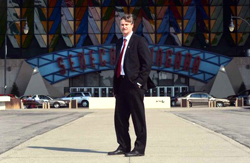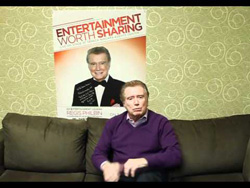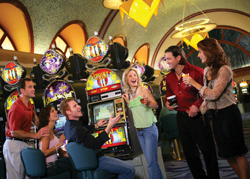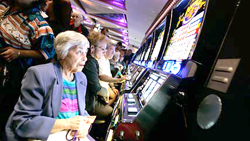Facts of life at the Seneca Casino
By Frank Parlato
It displaced a convention center where out-of-town people convened, then went to hotels and restaurants. It became the foreign-owned Seneca Niagara Casino, but tourists hardly come.
The gamblers – by Seneca design - are middle and low-income locals.
The Convention Center made money for locals from out-of-town people. The foreign Seneca casino (which displaced it) makes money for out-of-town people (Seneca) from locals.
Here’s their formula: Win from a large number of petty gamblers, $50 -100 at a clip; it’s called “the grind.” More lucrative and easier than attracting premium gamblers, the “grind” attracts the tinsel puff version.
Nine times out of ten, he’s local born and bred.
The most intriguing thing about the casino is that you never see anyone smiling. Four million of them a year, on average $85 poorer and not one smile.
When I went there recently, the only one I saw smiling was Regis Philbin - who was pictured on a slot machine.
Reverse investment: At a 92 percent payout, if he hits the button on the slot machine at a rate of three times per minute, a gambler will lose (on average) his entire original investment in 21 minutes. If he starts with $20 and keeps putting in $20 bills every time he loses all his money, in one hour, he will lose $57.14. This is called the law of probability. This law is why Casino owners become rich.
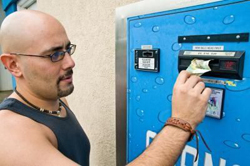
Some eight percent wiser.
Break even strategy: This much smarter investor (below) can have action all night in the back of the casino without losing any money by using the coin changer machine. It looks similar to a slot machine and he still gets all the ambience- the dark, neon lit room, the second hand smoke and the company of unsmiling, unhappy people losing money. The difference being that for every dollar he puts in, he gets a dollar back. He is in fact the only one in the place not losing money.
